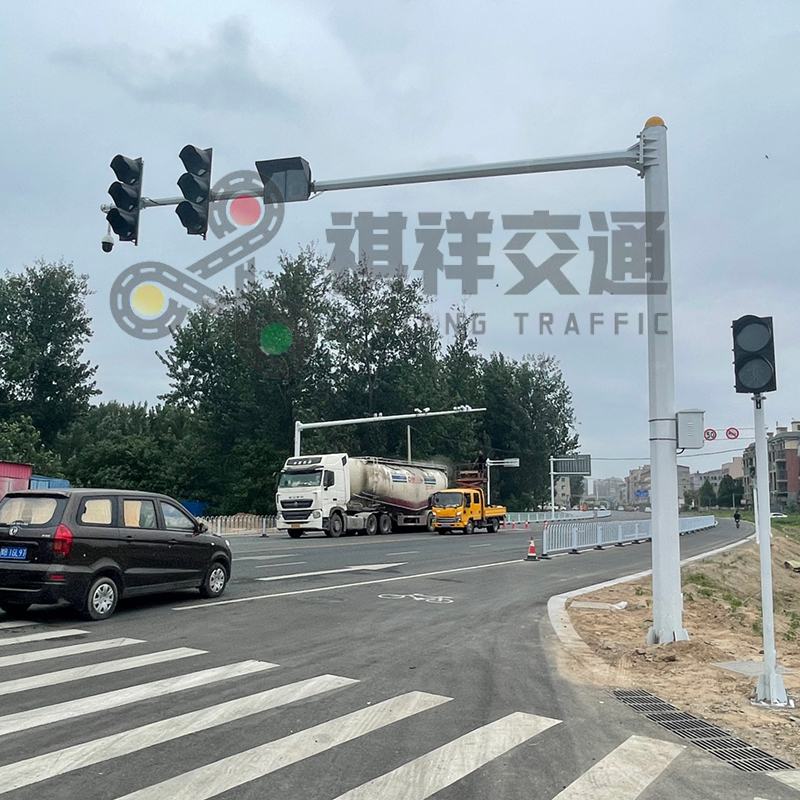Octagonal traffic signal poles are common on roads and intersections and are an important part of traffic management systems. The poles are designed to support traffic signals, signs and other devices that help regulate vehicle flow and ensure pedestrian safety. When it comes to these structures, one of the key considerations is their height, which plays a major role in their effectiveness and visibility.
The height of an octagonal traffic signal pole may vary depending on a number of factors, including the specific location and the type of road or intersection it serves. However, there are standard guidelines and regulations that specify the minimum and maximum heights of these poles to ensure their functionality and meet safety standards.
Generally speaking, the height of octagonal traffic signal poles is usually 20 to 40 feet. The range can be flexibly adapted to different road configurations and traffic management needs. For example, in urban areas with heavy pedestrian traffic, shorter poles can be used to ensure that signals and signs are easily visible to both drivers and pedestrians. On the other hand, on motorways and main roads, taller poles may be required to provide adequate visibility over longer distances and at higher speeds.
The exact height of an octagonal traffic signal pole is determined based on a number of factors, including the road’s speed limit, the distance of the signal pole from the nearest lane and the angle at which approaching vehicles need to see the signal. Additionally, factors such as the presence of overhead utilities, crosswalks, and other infrastructure can affect the height of these poles.
In terms of structure, octagonal traffic signal poles are typically made from durable materials like steel or aluminum to withstand the elements and support the weight of the traffic signal and other equipment it holds. The octagonal shape of these poles provides structural stability and resistance to wind loads, ensuring they remain upright and safe in all weather conditions.
The installation of the octagonal traffic signal pole was a carefully planned process that involved consideration of underground utilities, traffic patterns and pedestrian access. Correct placement and securing of the pole is crucial to ensuring its stability and longevity. Additionally, wiring and connections for traffic signals and other equipment must be carefully installed to ensure reliable functionality.
The height of the octagonal traffic signal pole is important not only for visibility and functionality, but also for safety. Correctly positioned and sufficiently high poles help prevent obstruction of the view of drivers and pedestrians, reduce the risk of accidents and improve overall traffic flow. Additionally, the height of these poles contributes to the overall aesthetics of the road infrastructure, creating a unified and organized appearance that enhances the visual appeal of the surrounding area.
In addition to supporting traffic signals, octagonal traffic signal poles can accommodate other equipment such as crosswalk signals, street lights, security cameras and signage. The height of the pole must account for the placement of these additional elements to ensure they are at the optimal height for visibility and functionality.
As technology continues to advance, there is an increasing trend to incorporate smart features into traffic signal poles, such as sensors for traffic monitoring, adaptive signal control systems and communication equipment. The height of these poles may need to be adjusted to accommodate the installation of such advanced equipment, further emphasizing the importance of flexibility in the design and construction of these structures.
In summary, the height of the octagonal traffic signal pole is a key factor in ensuring effective traffic management, visibility and safety on roads and intersections. After careful consideration of a variety of factors, including road type, traffic patterns and equipment requirements, these poles are designed and installed to comply with specific height guidelines and regulations. By supporting traffic signals and other important equipment, octagonal traffic signal poles play a vital role in maintaining order and safety on the roads.
Please contact traffic products manufacturer Qixiang to get a quote for octagonal traffic signal poles.
Post time: Mar-14-2024







